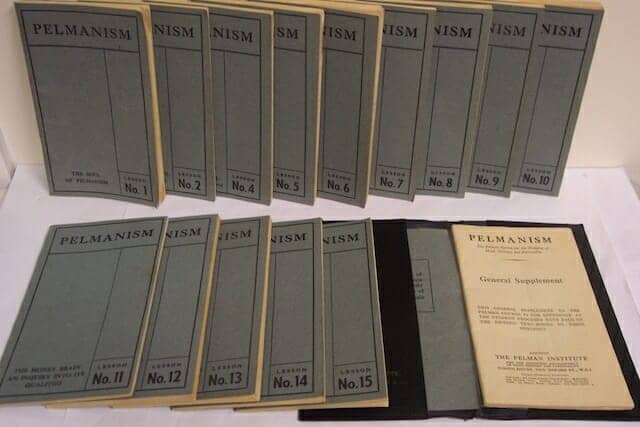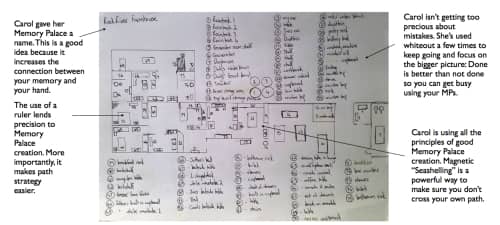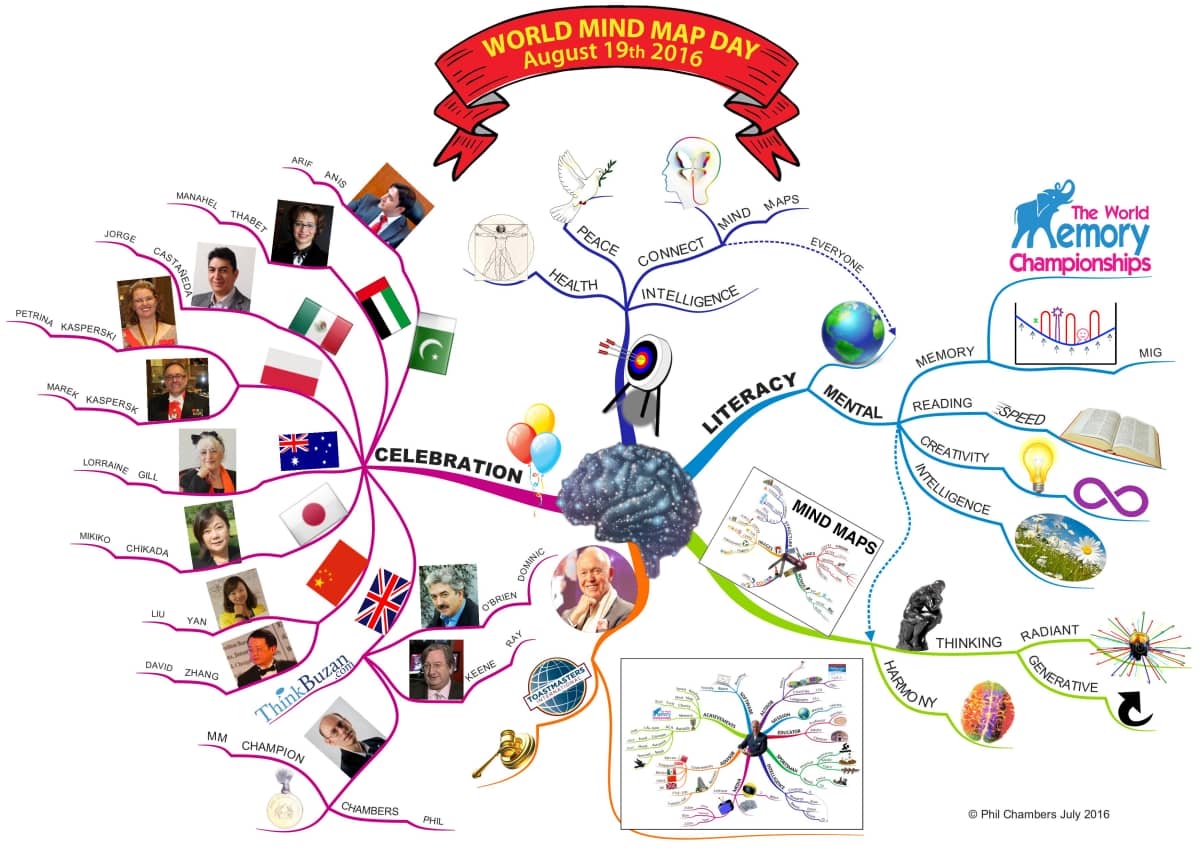Podcast: Download
Subscribe: Apple Podcasts | RSS

Would you like some brain training exercises to keep you sharp and on top of your game all the time?
I hope the answer is a resounding, “Yes!”
Here’s why:
Conditions such as mental illness and aging contribute to mental decay.
All the more so if you’re already suffering from mental illness, not to mention the medicinal side effects of psychiatric medicine. These medicines, even when useful, can cause your memory a lot of harm.
Here’s the good news:
Losing control over your cognitive functions can be hard, but it doesn’t need to happen. There is a way to avoid cognitive decline, and all it involves is training your mind.
In this post, you’ll learn everything you need to know about brain training exercises to help keep your memory healthy.
All About Brain Training
Although many people believe that brain training is a modern invention, it actually has a rich history. To take one example, check out the brain training exercises admired by the Edwardians nearly 100 years ago.
In fact, mnemonic systems were all the rage in 19th century Great Britain. Famous author Mark Twain even had one called “The Memory Builder”.
Then there’s Pelmanism.
Like the brain exercise training favored by the Edwardians, Pelmanism is a product of Great Britain, and became very popular during the first half of the 20th century.
Get this:
More than 500,000 people reportedly used these brain training exercises. One of them was the Prime Minister of the country himself!
Why was it so popular?
First, the system revolutionized brain training because it targeted the same mental functions we focus on optimizing to this day:
- Attention
- Concentration
- Creativity
The Pelman Scientific Mind Training Program focused on each of these to help people exercise their minds. Participants were mailed monthly booklets with games and exercises designed specifically to stimulate one or more of these functions.
All of which goes to show that brain training and the memory exercises that go with it aren’t new. And of course, Anthony is always coming up with different brain exercises you can explore. Check these out:
Even better:
Here are 9 Brain Exercises That Ensure Memory Improvement.
We have even more scientific evidence than ever to guide us these days. Modern neuroscience has managed to prove beyond any shred of doubt that our brains are in fact malleable like plastic.
In fact, we all have to ability to modify the structure and functions of our brains.
Of course, a lot depends on the internal and external factors of our lives, such as other bodily processes or environmental changes. But overall, every single person can intervene and create a better mental life.
Sadly, though, cognitive decline is becoming increasingly common past the age of 30. One reason is that people don’t understand the difference between memory loss and forgetfulness.
Nevertheless, slowing down the aging of our brain through training is a prospect that fills us with hope. And research shows that it’s completely achievable.
However, if having a sharper memory is something you aim for, you need to know right now that it takes work.
In order to remain in a constant state of connectedness regardless of whether you’re 30, 50 or 80 years old, you need to push your mind to learn something new each day. There is nothing more stimulating for your synapses than being put at work.
In turn, this leads to tangible improvement in more than one aspect.
For example, according to Dr. Jee Hyun Kim of the Florey Institute, focus diminishes with age.
Due to this deterioration of focus, stimulating your attention regularly can be crucial. By activating the frontal cortex and the hippocampus, you are not working only on this function, but on your memory and thought as well.
How Brain Training Can Increase Focus And Attention
There are many ways to achieve better focus and attention. One possibility lies in a simple, yet intellectually stimulating mobile app.
Similarly, reading new books, especially with a re-reading strategy, or solving math and logic problems puts all the areas of your brain to work and boosts cognition in the process.
Then there’s meditation. You can do a walking meditation or sit just to sit Buddha-style for improved memory and concentration.
And recent studies that will be discussed shortly suggest that it might even help treat mental illness.
Treating Mental Illness With Brain Training Exercises
Let me give you some context:
I have spent the last couple of years researching alternative treatments for mental conditions that affect memory and cognition.
Why did I choose this path?
Well, three years ago, someone I care about deeply was diagnosed with schizophrenia. I have spent all my days since trying to educate myself on the topic as much as possible.
In my journey, I have found that many specialists believe that brain training can help prevent degenerative neural diseases such as dementia or Alzheimer’s.
And that’s not all. In fact, such practices can help with instances of mental illness as well. This comes as great news for the vast community of patients struggling with such afflictions.
Recent medical science-related endeavors back up this seemingly bold claim. A study conducted at McLean hospital in 2017 has uncovered the potentially beneficial results of brain training in the treatment of mental illness, namely bipolar disorder in particular.
The lead scientist was Eve Lewandowski, Ph.D., an assistant professor at Harvard Medical School and developer of McLean’s bipolar disorder and schizophrenia programs.
According to Lewandowski, BPD affects the memory, processing speed and executive function of most of the patients who suffer from it. This impacts their daily existence and overall quality of life quite negatively.
Therefore, working on improving cognitive dysfunctions is crucial for symptom relief in this case. And what better way to achieve that than through brain training exercises? Lewandowski’s research found that the participants who used techniques pertaining to this area exhibited visible betterment that was maintained for at least six months afterward, if not more.
She got the idea after noticing how effective this approach was in keeping the symptoms of even more serious conditions such as schizophrenia under wraps.
People going through the four stages of schizophrenia have exhibited visible improvement in their symptoms after cognitive therapy.
In fact, previous trials conducted under the supervision of professor Barbara Sahakian of the Department of Psychiatry at Cambridge have shown that something as simple as playing brain-stimulating mobile games improves cognition among schizophrenia patients. And it helps in areas where drugs have previously failed, which is even more important to keep in mind.
Just imagine how beneficial the effects could be if this would be tried in the long run. Lewandowski and her colleagues support the importance of acknowledging brain training as a viable treatment for mental illness. Modern psychiatry should recognize its merits and integrate it into the roster of available therapies.
But until that happens, you can also try doing at home. To tap into the healing properties of this approach, you don’t need to download a mobile app or buy fancy books and puzzles to keep your mind sharp. There are plenty of mental techniques that you can try at home and see how they work out for you. Here are the best three.
The Best Brain Exercise Techniques
1. Memory Palace
If you’re looking to train your memory specifically, Anthony Metivier’s approach to the ‘Memory Palace’ technique is one of the best to get the job done.
Famous historical and fictional figures alike, such as Hannibal Lecter from the renowned Silence of the Lambs book and film series are perfect examples of how this works.
Association is the key to creating your own memory palace to walk around in whenever you need to retrieve certain pieces of information.
When these have been assimilated long ago, you need to correlate each of them with a specific part of a location. A good starting point is your own house because it is familiar territory. For best results, draw out the floor plan of your first Memory Palace by hand. Like this:
But before you start drawing, walk around your house first.
Then, once your’e done, assign various memories to various rooms.
To take it one step further, do the same thing but using objects within the same space. Fill your memory palace with everything you think is worth remembering, but make sure that you build a strong mental route in the process.
How To Use The Memory Palace Technique
When the time to remember the information comes, simply retrace your steps along that path. It will take some getting used to, and you will surely fumble at first. Nobody is born an expert, and when you’re dealing with cognition-impairing mental illness, it might be even harder. But practice makes perfect, and proper brain training exercises keeps your mind sharp too.
Of course, things might not be as simple or straightforward. Sometimes, direct associations simply aren’t possible. This is where your imagination and the ability to create allegories comes in.
For example, let’s imagine you want to remember something that has to do with a dandelion, a hose, and a Calico cat.
You are standing in your living room and there is a dandelion on the table. You go up the stairs, towards your bedroom. A hose is hanging on the door.
You enter, and the most adorable Calico cat is sleeping on your bed, purring. You have now memorized this sequence by simply making associations between its elements and actual, palpable places in your house.
2. Mind Mapping
The concept of mind mapping is a slightly similar one, but it is far more schematic and two-dimensional. In fact, it consists of a visual outline that starts with one core concept and then branches out into information that relates to it.
Some people prefer to do this on paper because they find it stimulates their assimilation of the notions even better.
Such a diagram can represent anything, from words and concepts to more specialized information such as tasks that need accomplishing.
And if you’re not a fan of writing it all out, you’ll be happy to find out that it can be used in combination with the Memory Palace technique. The two have a very strong meeting point between them.
In fact, you can listen to Phil Chambers discuss using mind maps and Memory Palaces together.
Chambers, a world mind mapping expert, mind maps serve even more complex purposes. A mind map follows all the principles of memory, but it also helps you think. But memory palaces are better for actually remembering information, while mind maps are more suitable for processing and understanding it.
The two are sometimes useless when not together.
For this reason, finding a middle ground that includes mind maps into your memory palace can be a great way to stay sharp and on top of your game.
Furthermore, together they stimulate more essential areas of the brain, thus preventing premature decay.
3. Dominic System
The Dominic mnemonic system is one of the most famous brain training techniques in the world. It was designed by famous British mnemonist Dominic O’Brien, who also happens to be an eight-time World Memory champion. Most brain athletes use it nowadays to memorize long strings of digits for competitions. So, why is it so effective?
Just like the Major system associates numbers with sounds, the Dominic system notoriously does a similar thing by assigning them the initials of a person’s name. It’s a highly effective person-action system that can be combined with the memory palace technique, thus creating the Hotel Dominic, as many experts lovingly call it.
But O’Brien’s contribution to the world of brain training doesn’t stop here. He also famously established that the strategical recalling of information following a five-step pattern is the best way to cement said information in your brain. This should happen in the following order:
• The first review takes place immediately;
• The second review follows it 24 hours later;
• The third review then happens one week later;
• One month later comes the fourth review;
• And finally, the fifth review occurs a total of three months later.
Thus, in the span of roughly four to five months, you will be able to remember anything.
By sticking to this routine, you will be able to fight the cognitive decay that many mental illnesses bring, too. When your schizophrenia or bipolar disorder are playing tricks on your mind, relying on a strict pattern to memorize relevant information can be a true lifesaver.
Final Thoughts
To sum up, it must be noted that medical science is just now starting to look more into the beneficial effects of brain training. Cognitive dysfunction can be caused by many things. These range from something as naturally occurring as old age to more complex issues such as schizophrenia or bipolar disorder.
Fortunately, practicing one or more of the brain training exercises discussed above can be beneficial. It is something that can help you refocus and even excel when it comes to memory and thought patterns. As a short recap, these are:
• The Memory Palace.
This famous approach is based on making associations between physical locations and various pieces of information. The best way to build the memory palace is by correlating them with specific spots around your home. The familiarity of the territory is prolific for this purpose.
• Mind mapping.
It consists of a series of diagrams that represent two-dimensional connections between concepts. Creating mental maps works best when used in combination with the memory palace. This activates more areas of the brain than the two would alone, thus preventing decay and enhancing performance.
• The Dominic system.
Focused on numbers, the Dominic system heavily relies on the connection between these and letters. These usually are the initials of someone’s name. When used together with the memory palace technique, it is known as the Hotel Dominic. That’s a cool name, but at the end of the day, it’s best taken in the context of the many pegword method options you have to choose from.
These three techniques are equally efficient standalone as they are when combined. In order to choose what suits your needs, you will need to try them. Presentations and explanations can only do so much.
Nevertheless, having this knowledge is essential for the future. If you or someone you love, as it happened in my case, are slipping down the slope of mental illness, take action now. Explore the possibilities given by brain training and build a better tomorrow.
Related Posts
- 15 Brain Exercises & Memory Exercises For Rapid Remembering
Would you like simple brain exercises that you can complete just about anywhere? These brain…
- 7 More Mental Exercises For The Brain From Around The World (Part 2)
Mental exercises are essential to developing rapid fire memory abilities. If you want to learn…
- MMMP 009: Memory Training Consumer Awareness Guide
Here's an audio presentation of The Magnetic Memory Method "Memory Training Consumer Awareness Guide."








